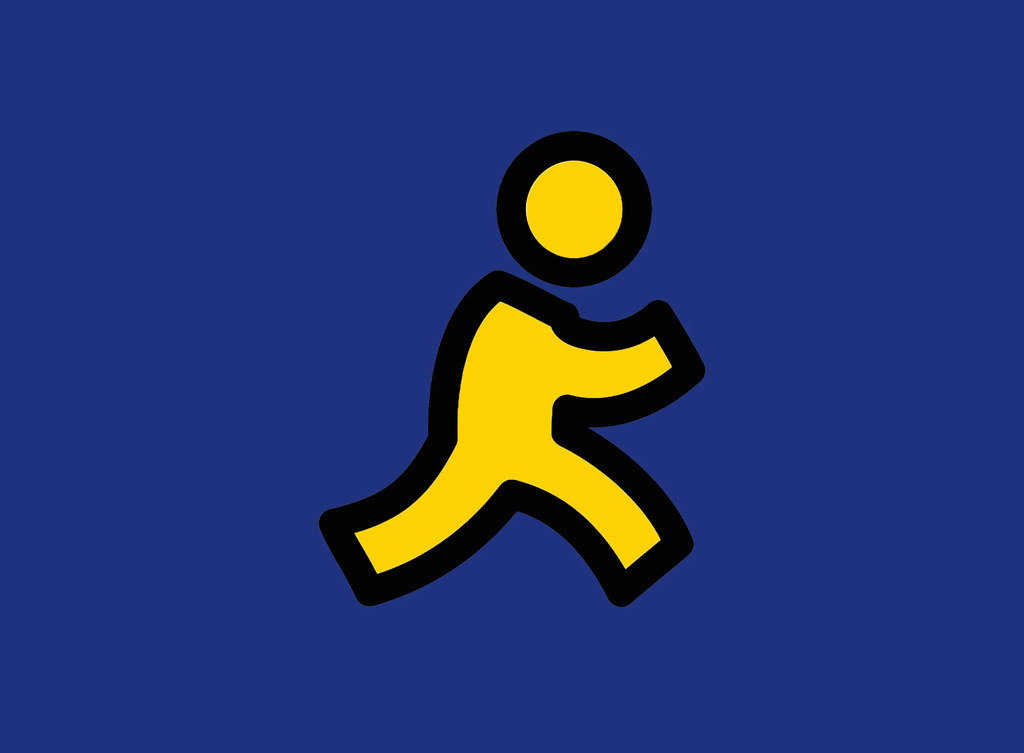At the peak of its popularity, America Online (AOL) was a dominant player in the internet industry. And one of its most iconic services was AOL Instant Messenger (AIM).
AIM was AOL’s “killer app” — something that everyone (of a certain age) just had to have. Unlike many other parts of the 1990s internet, AIM wasn’t paywalled or restricted to AOL subscribers. Anyone could sign up, and for a while, it seemed like everyone was.
Thanks to compelling and novel features like the buddy list, integrated emoticons, and, yep, the away message, AIM became indelibly imprinted on the early days of the consumer internet.
Here’s the story of how the away message came to be.
The history of AOL
AOL’s story is unique — and not just because it was founded far from the tech capitals of the time. Based in Northern Virginia, AOL went through a series of iterations as it found its footing in the marketplace.
Launched as Control Video Corporation in 1983, the company’s initial focus was online gaming. Through a service called Gameline, users would download games onto a special cartridge that could be played without an internet connection.
Just two years later, CVC rebranded as Quantum Computer Services to provide an expanded suite of online services. One of those was the first commercially available online chat; another was the first massively multiplayer online role-playing game.
Quantum introduced AOL in 1989 to make its services available to all computer users. (Previously, they were specific to certain PC manufacturers like IBM and Tandy.) Two years after that, the company renamed itself AOL after its flagship product.
The emergence of AIM
By the early Nineties, AOL had become influential in the nascent internet space. About half of the nation’s online population was using AOL, and its business model — a monthly service charge, plus a per-minute rate — had been proven profitable.
Still, the company wanted to reinforce its market position. In 1996, AOL switched to an unlimited access plan that did away with the per-minute charge. The hope was that users would spend even more of their time online.
That wasn’t the only change afoot within AOL. Around the same time, a skunk-works team was developing AIM as a free, stand-alone product that anyone — not just AOL subscribers — could use.
The company’s leadership hated the idea of giving something away that users had been paying for (IM, separate from AIM, had been included in the early AOL service). For this reason, the AIM team launched the product very quietly in 1997. But it immediately proved popular, with 900 users on its first day of operation.
Feature build-out
The away message came about early in AIM’s development process. AOL, like many tech companies, practiced what’s known as “dogfooding” — when a business uses its own product internally to work out bugs and make refinements.
Through this process of eating its own dogfood, AIM’s developers discovered a gap in how the service handled presence. Because it only showed users as “active” when they had been active very recently, AOL’s internal teams found their colleagues showing as “away” even if they’d only left their desk for a few minutes.
The away message came about to solve this problem, former AOL design director JoRoan Lazaro told Inside Design magazine in 2019.
“The away message was the classic finding a solution to a very personal problem: nobody’s answering, what does that mean?” he said.
The culture of away messages
At the peak of its popularity in 2001, AIM had 36 million users. And many of them were using away messages for much more than just sharing what they were doing.
Away messages became a means of displaying one’s personality: through song lyrics, inside jokes, emoticons, quotations, and more.
Bustle, writing in 2015, identified nine iconic away message categories — from The Shout-Out to The Cryptic Quote to The Big Diss.
ugh Sundays!!!!! Lol (inside joke w my friends sorry if u don't get it)
— your away message (@YourAwayMessage) October 12, 2014
While the first away messages may have appeared in AOL’s corporate offices, it was young people who ran with them. As a teenager in the late Nineties or early 2000s, you definitely had an AIM account, and were almost definitely using it to share away messages with your Buddy List.
*~*~*i wanna be ur favorite hello && hardest goodbye*~*~*
— your away message (@YourAwayMessage) January 14, 2014
Many of the away messages seem nonsensical. But there was a level of irony to them that, in their combination of self-referential humor and absurdity, looks a lot like our present-day memes.
d0NT crii becuz itz 0VER.
— your away message (@YourAwayMessage) October 6, 2017
SM!LE becuz it hAPPENEd.
– aUDREY. hEPBURN. (0R SOME1) –
“Regardless of how silly our lingo and elaborate handles back then seem now, it doesn’t change that [AIM] was the social media of choice at the time — all the cool kids were doing it,” Bustle writes.
What’s next for the away message
AIM away messages died out in 2017, when AIM as a whole was retired. By that point, broadband had replaced dial-up, AOL had taken its business in a different direction, and social media had emerged as the “cool” way to express oneself on the web.
Still, there’s clearly nostalgia for the era of the away message — a time when “the hardest part of creating an online profile was deciding which color to make your Comic Sans,” as Bustle put it.
Instagram is capitalizing on this sentiment with its own version of away messages. Introduced late last year, the platform’s “Notes” feature lets users display short, 60-character posts at the top of their message inbox.
“From asking for recommendations to sharing what they’re up to, Notes give people a casual and spontaneous way to express themselves and connect with each other,” the company explains.
For those who use Instagram, Notes could serve as a decent replacement for AIM away messages. But it remains to be seen whether the wacky spirit of the away message will carry over.
Image credit: Wired


